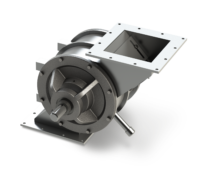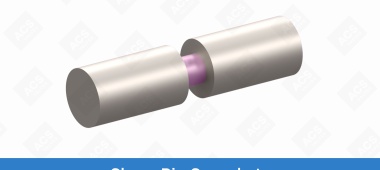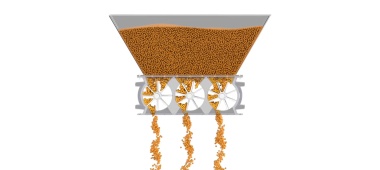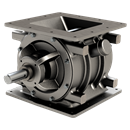Tips for conveying recycled plastic flakes

So that your equipment doesn't end up in the trash
Flakes are the dainty little slivers of material often used in plastics recycling.
That is, they’re dainty until they get stuck somewhere along your conveying line, where they melt together and form a giant flake monster that brings production to a screeching halt.
To avoid any unearthly plastic blobs from breaking your equipment, here are a few tips for conveying recycled plastic flakes.
Where might problems arise?
Giant flake monster isn’t, as you guessed, the technical term. What we’re talking about is a significant material jam in the rotor clearances of your valve. This can cause the valve to jump and the rotor shaft could end up damaged to the point where it would need to be replaced.
Which valves work best?
To avoid material jams, we recommend valves with closed end rotors for conveying recycled plastic flakes. This helps keep material away from the valve’s outboard bearings and prevents material build up.
Air purge kits will also keep material away from your shaft seals, and outboard bearings by blowing any escaping material back into the rotor pockets.
Along with closed end rotors and air purge seals, shear protectors will prevent material from jamming in the rotor clearances and building up, causing damage to the rotor shaft.
The S-Pellet Series valve comes with a shear protector, and is one of the valves we recommend for recycled plastic flakes. Plastic flakes are relatively easy to convey with the right equipment, so standard valves like the CI Series valve also work great.
What material works best?
For most customers’ applications, cast iron is a good option for valves, and recycled plastic flakes are no exception.
If there are wet flakes being conveyed through the valve, or for sanitary applications, stainless steel valves are integral to staying compliant. Sanitary pockets and polish would also be required.
How fast should my rotor be spinning?
The standard rotor speed (between 15 and 20 rpm) is recommended for recycled plastic flakes. If you run the valve too slow, you’re risking overfilling your pockets with material. If you run it too fast, the material could bridge on top of the rotary valve, or cause more product to jam in the clearances.
The standard speed allows for 70 percent pocket fill, and keeps your product moving at maximum efficiency.
For more information on your specific application, please contact one of our experts here.
Categories: Conveying Systems , Durability
Go ahead, make your valve
Put your own spin on our customizable valves to get the best valve for your application, material and industry.

We have a series of items available for quick shipment
Items include: Pressure blower packages, MD Series, S-Pellet Series, Diverter Valves, Flex Tip Series, Screw Conveyors

How to: Check rotor-to-housing tolerances
Keep your rotary airlock valve compliant with NFPA guidelines and maintain strong performance by checking your rotor-to-housing clearances regularly.

Newsletter
Stay informed on all things ACSWe’ll keep you up-to-date on the latest valve how-tos, handy tips, and news from ACS. It’s totally free and you can opt out at any time.







